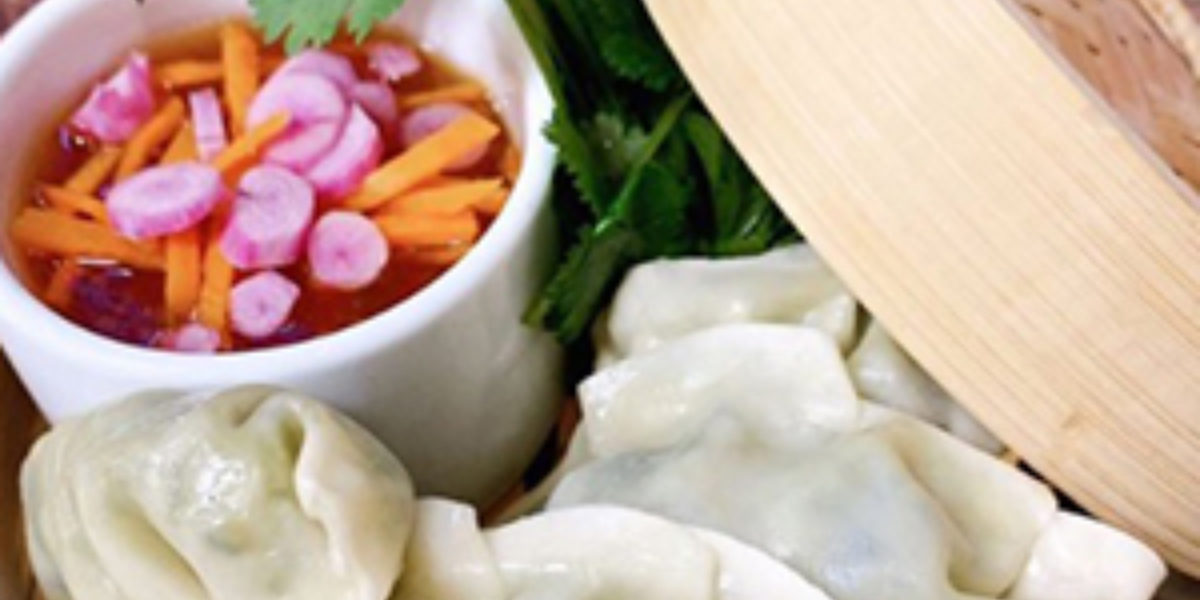
Flavor Atlas: Dumplings
As James Beard said, "Food is our common ground, a universal experience." Through our monthly column, Flavor Atlas, we explore worldly flavors and global cuisines through common ingredients or food preparation, and this month we're diving into the beloved world of dumplings.
It might as well be a universal truth that almost every culture has some form of dumpling -- a small, savory dough-based dish that is boiled, fried, or steamed-- from Italian ravioli to Polish pierogi. While the origins of dumplings are murky at best, all historical roads in the history of dumplings lead to China. Most historians believe that dumplings were invented during the Chinese Han Dynasty, an imperial dynasty that lasted from 206 BC to 220 AD.
To honor the rich dumpling culture of Asia and in honor of Asian American Pacific Islander Heritage Month, we're exploring dumplings from throughout Asia -- how they're prepared, how they're similar, how they're different, and why they're all equally delicious!
Chinese Xiao Long Bao
We could write an entire blog post on Chinese dumplings alone. Generally, Chinese dumplings can be broken down into seven broad categories: wontons, jaiozi, siu mai, har gao, sheng jian bao, bao zi, and xiao long bao.
Today, we'll look at xiao long bao, a delicious, round dumpling from Shanghai commonly known as "soup dumplings." These dumplings are traditionally filled with collagen-rich pork and vegetables, or a pork-crab-vegetable combo, that solidifies as it cools. The filling is then wrapped in a thin layer of dough that is gathered and pleated into a little ball and then steamed. As the dumplings steam, the filling melts, resulting in plump round bites that are filled with a rich broth-like liquid and tender meatball.

Meet the [Indian, Nepali, Tibetan] Momo
A close dumpling relative to the Chinese jiaozi, momos are most commonly found in Northern Indian, Nepali, and Tibetan cuisine. These dumplings are filled with a ground meat like lamb, chicken, or yak, finely chopped vegetables like cabbage and carrot, and fresh cheese like paneer, and served alongside a spicy tomato-based chili oil dipping sauce and pickled daikon radish. These steamed or pan-fried dumplings are an extremely common street food.
Korean Mandu
Mandu is a general term for savory meat and vegetable-filled Korean dumplings. Depending on the types of fillings, the name of each mandu is slightly changed: gogi mandu for meat-filled dumplings, yachae mandu for vegetable-filled dumplings, saewu mandu for seafood or shrimp-filled dumplings, and kimchi mandu for, well, kimchi filled dumplings.
These crescent-shaped, versatile dumplings can be steamed, boiled, or pan-fried, and are often served as part of Korean Lunar New Year festivities each year and are considered a symbol of good luck.
May is Asian American Pacific Islander (AAPI) Heritage Month, a time to celebrate the immense contributions from throughout the AAPI community and the tremendous impact and influence this community has had on American culture. Interested in learning more about Asian food? Read this interesting post on Debunking Common Asian Food Myths from throughout the Asian diaspora.
Be sure to check out our other Flavor Atlas posts including an exploration of stews, the history of rice from the African diaspora, and the world of noodle soups in honor of National Noodle Month (March).
+++
At FLIK Hospitality Group we believe in great food, great service, and great people. Our wellness first approach ensures our food supports healthy and delicious choices, specially curated by our team of culinary experts and registered dietitians. At FLIK, we believe in seasonality in sourcing our ingredients and providing a customized approach to the culinary and hospitality needs of each client. Our dedication to providing quality hospitality service is unparalleled in the industry.
Have feedback or questions for our team? Email us at flikblog@compass-usa.com.
Interested in working with us? Apply today!